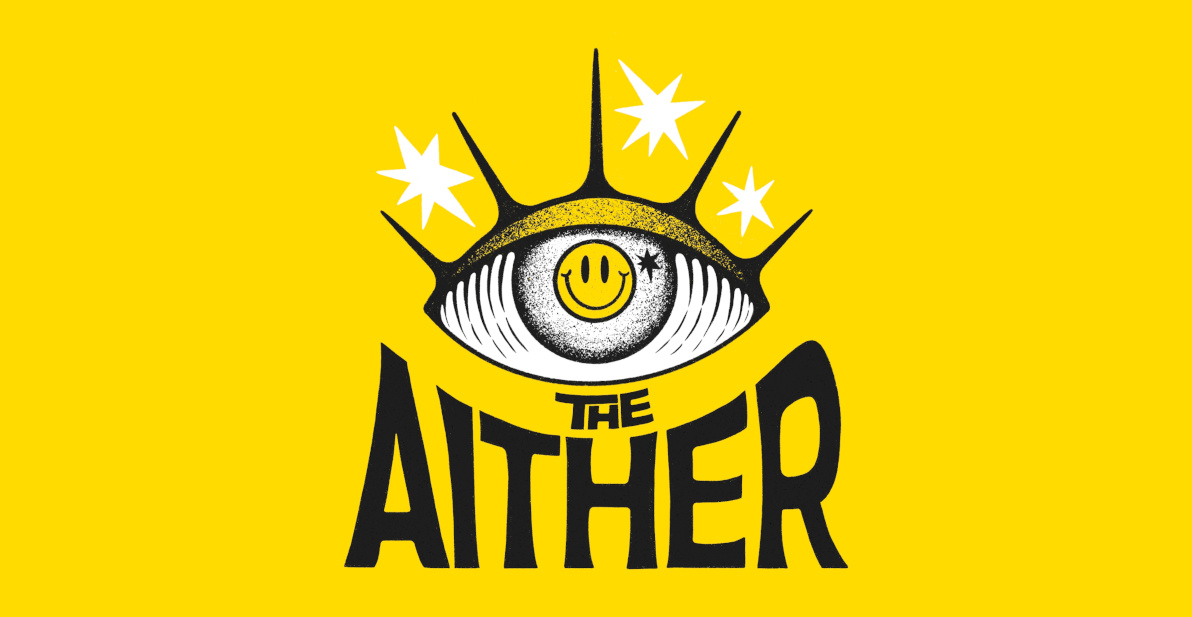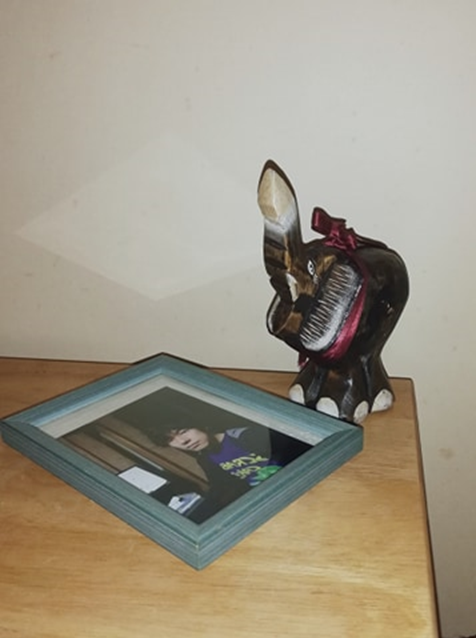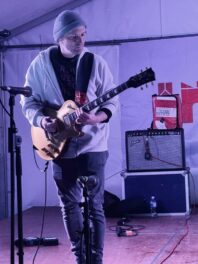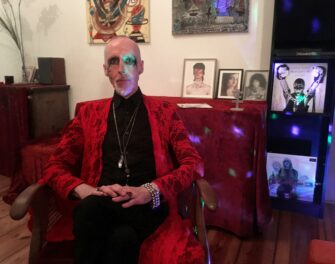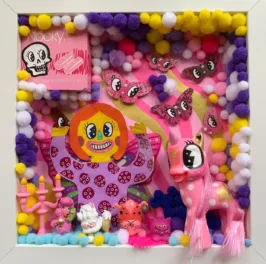I met Yu Hirayama earlier this year, before the COVID19 pandemic. We talked over messenger for several consecutive evenings, discussing Yu’s life, philosophy and creative projects. His independent magazine FEECO, his music label Suikazura and his upcoming book written about the legendary post punk avant garde project Nurse With Wound…
And then COVID happened and things went a bit sideways. The structure of my life and priorities changed, literally overnight. We eventually managed to reconnect and conclude the interview.
The following is an amalgamation of those multiple conversations. Yu’s English is much better than my Japanese so most of this interview was conducted in English, some has been edited with Yu’s Permission for clarification.
You create and release an independent magazine called FEECO, how did it start?
When I started editing FEECO, I tried to connect with artists who I adored. We helped to promote each other’s projects. Xuh from Kraków (Poland) is one of my muses, she did the cover art of my first issue.
In the newest issue, I wrote about a zine call ciut which she and Rezcka (Magdalena Rzepecka) just published in this year.
Leonardo Casas wrote an article about me in his magazine Estrellita Mia. I once curated, and translated an interview with Daisuke Ichiba for EM’s “Japan Issue”.
EM is a kind of space or passageway to nice artists. I have been writing about them in my magazine. Igor Ruz, Ila Pop, Whale Song Partridge and The Partridge Family Temple fellows. I’m in the middle of finding out how I can introduce them to many people.
Captainhowdie who’s the author of Randal’s Friends (Ranfren), is another one of my best. I don’t know much about him/her/them. I don’t even don’t know what he/she/they does usually. The only thing I can say that Captain is just continuing to make art day to day. It is chaotic, slap stick, sometimes nostalgic. It is surreal but established world. Confusing, and messes with my memory when I read the comics.
You really need to see Captain’s website. It’s like a trip or “surfing” on the Internet from years ago. Very similar to the 2010’s internet meme like vaporwave, but it’s surely different.
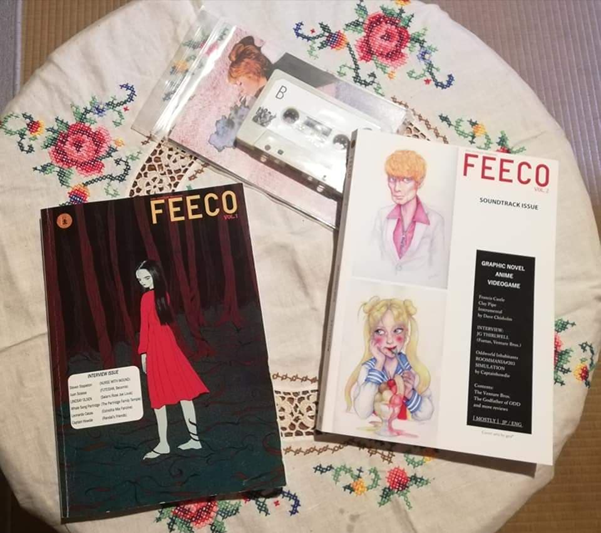
What is the content of the Magazine?
I’m trying to introduce unknown artists in FEECO, but I have to keep a balance because I always avoid to be irresponsible as the big media. I don’t want the reader to end up with a transient encounter. Ultimately, I’d like to do something more than just reporting. In order to do that, I have to be good at English.
I’m really troubled because I’m aware that my English is getting worse every day. I can’t concentrate on my studies at all because of the recent bad days. It’s hard for me to study things so badly, even though I have the will to do it.
I have to make an effort to be on equal footing with the people I’m covering.
However, the recent issue of FEECO is bilingual English/Japanese?
The purpose of writing in Japanese is to introduce artists to readers, I mean that it convey a non-Japanese points of view. When you grow up in Japan, maybe you don’t think of yourself as “Japanese thinking”, and the people I interviewed don’t think of themselves as being “not Japanese thinking”.
So, putting the two into same space will consequently describe the difference between each one.
I hope the magazine will be like a corridor that provides a bird’s eye view of multiple ideas and their differences. In a way, it could be a pragmatic perspective.
It seems to be difficult because I’m not that accomplished.
What about the name Feeco? What does it mean?
It is named after the depot station which appears in a videogame, “Abe’s Exoddus“. The game is a part of Oddworld Abe’s trilogy. When I was 10 years old, I played the first title Abe’s Oddysee.
I was quickly attracted by whole of the game. So I asked my father to buy the second title.
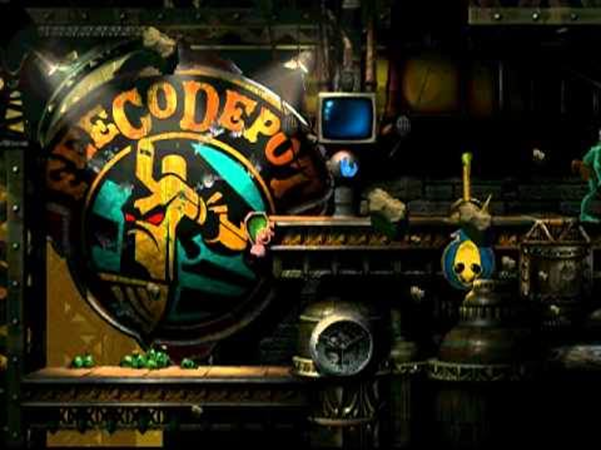
In my magazine’s design or layout, I think it is heavily influenced by videogame guidebooks. A bunch of data, images, and trivia & trifles.
Guidebook is interesting wherever you read it. It would be even better if captions accompanying images are personal talk from the writers. I was particularly influenced by a guide book made by an editorial team called APE. Super Mario World” and “Donkey Kong Country” has objective data and design. I also loved the ones in “Um Jammer Lammy”.
The format of Western books is very different from the Japanese ones. The paperback is just words and occasional pictures. That blandness seemed cooler than a magazine full of flashy ads and catchy copy.
When translated into Japanese, the sentences inevitably turn out to be a bit stuffy, but I liked it. So when I write something, I always try to reduce things like emotion or ego.
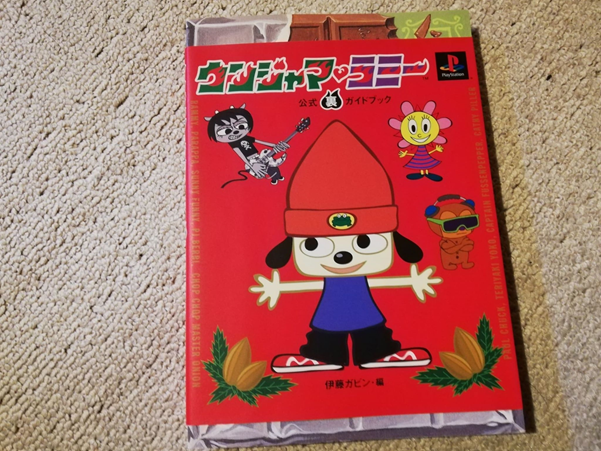
When I started making zines, I used to attend gatherings of people who were making it close to me or who were interested in it. The only thing these people have in common is making zines. There were some people I didn’t like, but I didn’t feel bad about it because there were a lot of opportunities for me to recognize what type of person I am.
I did have the opportunity to introduce myself to the people who gathered, but I later realized that I didn’t really like that. To put it bluntly, I have little desire to connect with people. Even if we share the same hobbies and connections, it’s almost always incompatible.
I already knew from when I was a teenager that I’m not good at joining any of circles. It may be only in Japan, but there is a concept called school caste. People who aren’t good at school try to open themselves up to another outlets on anywhere. It could be a club activity, it could be a hobby circle, it could be any number of things, but anyway, whenever people get together, a hierarchy like school caste probably occurs. So it’s not good environment for me, even though society is like it that.
You also dabble in visual art?
That’s just something I do on the side to relax or kill time.
I’m not an artist.
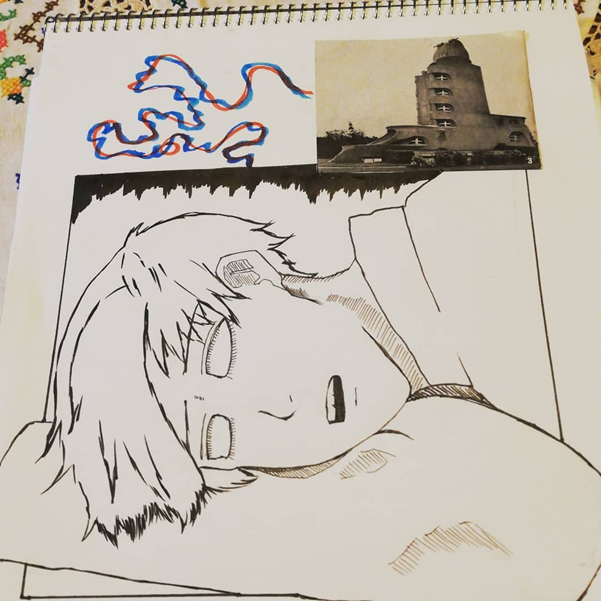
You do not consider your editing and writing art?
You can say these are art. But I regard my true work as almost librarian. The word “librarian” was used by one of the artists I admire, Peter Christopherson, when describing his music project, COIL.
COIL was putting out a large amount of literature-based knowledge as music. I don’t make music or visual art very much, but I think I’m influenced by that attitude.
In other words, the books I write have a lot of discourse, a lot of data first and foremost. There is no ego there. If there’s anything similar, it’s just like a curiosity and drive to create a book.
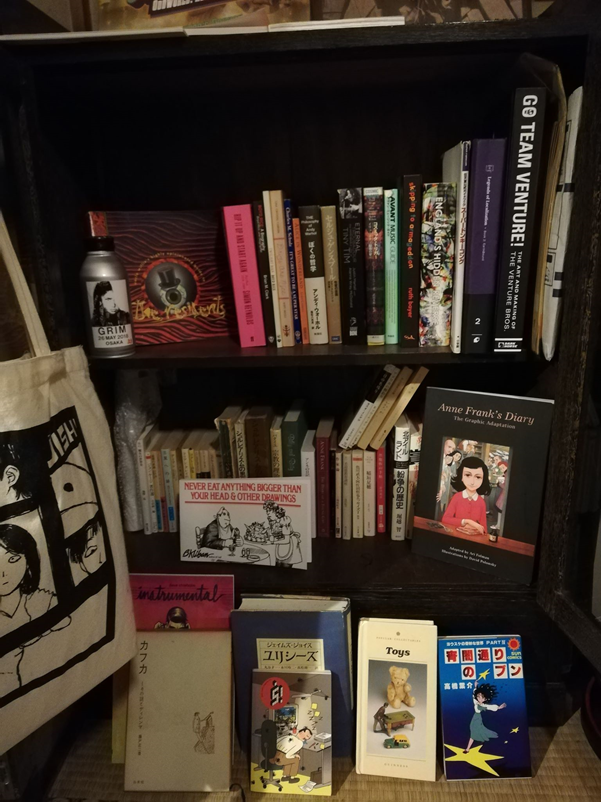
You also make music?
I wouldn’t call it as “music” (laugh).
I have a couples of instruments that I can play OK. I don’t think I’ve ever written a decent song.
You have a label where you release recordings?
I run a label named Suikazura that sometimes releases music. Suikazura means honeysuckle in Japanese.
I can’t remember why I named it that! Peter Christopherson who I mentioned, he was called ‘Honeysuckle’ by David Tibet (of Current 93) when David wrote about Peter’s death in Current 93’s Honeysuckle Aeons album.
Perhaps that’s the origin of the label name.
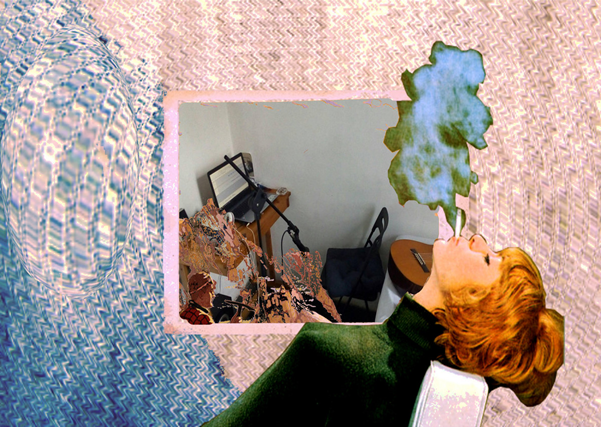
Do you approach the label as a librarian also?
I do not. The label is like a platform for me. I put everything on there.
Basically, everything I make will be a label publication. It’s not only books or music, but also events, too.
For example, I organized a talk show about Nurse With Wound in 2018 with a friends. I also put a catalog number on that event. This is an imitation of one of the labels I admire, Factory Records by Tony Willson. They label numbered posters, buildings, and even records of court battles. It’s inspired by Andy Warhol, I think. But I got the idea from Factory.
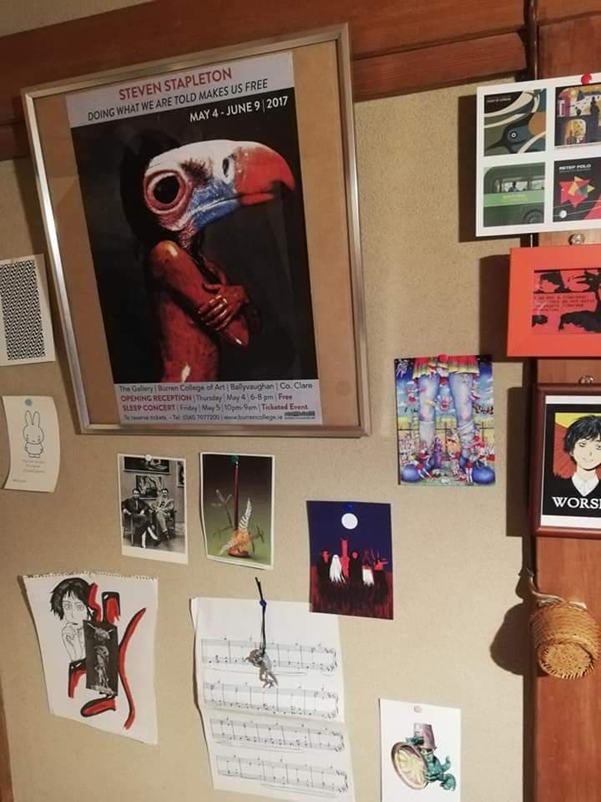
You have a book about Nurse With Wound coming out soon?
Ah, I hope so. Partly because of COVID, there will be a delay in the book coming out. The manuscript itself is already finished, but it was already delayed since before this virus panic, and I’m almost forgotten by people around me (laughs).
I started writing on the book in 2016. I cover a history of Steven Stapleton, (who is NWW itself) from interviews I did with him in 2017 and 2018. Both times were in his house at Cooloorta in the west of Ireland.
Initially, I interviewed people around Steven Stapleton via email, more than 30 people. As I continued to do that, I sent him a letter (he doesn’t use email or Internet). I wasn’t expecting a reply, but he gave me permission to interview him. So I decided to go to Ireland.
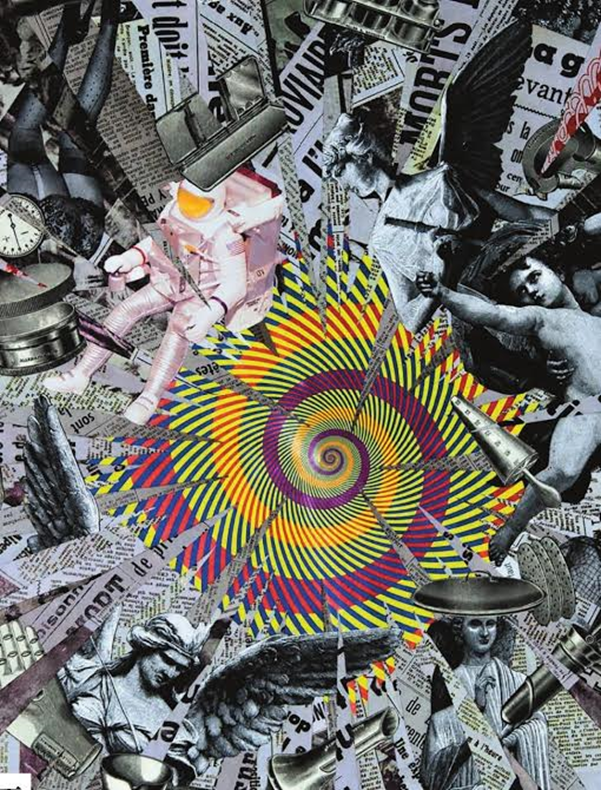
Amazing. What was that experience like?
Going to his house. It’s like a surrealist Disneyland.
I know his house from a short interview video in 2004 or 2006. However, when I actually went there, the house has changed a bit. The land, Cooloorta is like a canvas to him. A sort of place to put his art around there.
He and his family built the house themselves. They were in the process of building a new house when I visited, and when I visited in 2018 they let me in and treated me to a meal in their freshly built kitchen.
There are a lot of animals there, too, where they coexist as a family, not as livestock. Every time I visit, there is a new family member. The foals and pigs came up to us even as we were interviewing them.
The most appropriate way to describe them would be hippies. However,it’s more than that. Historically, “wanderers” have lived on the European continent. Gypsies, New Age Travelers, etc., depending on the time and conditions, but Steven has a background of being an artist and strong individualist.
In my opinion, he was influenced by three cultures that brought him up. Dada Surrealism, the radical leftist ideology that originated in 1968, and punk.
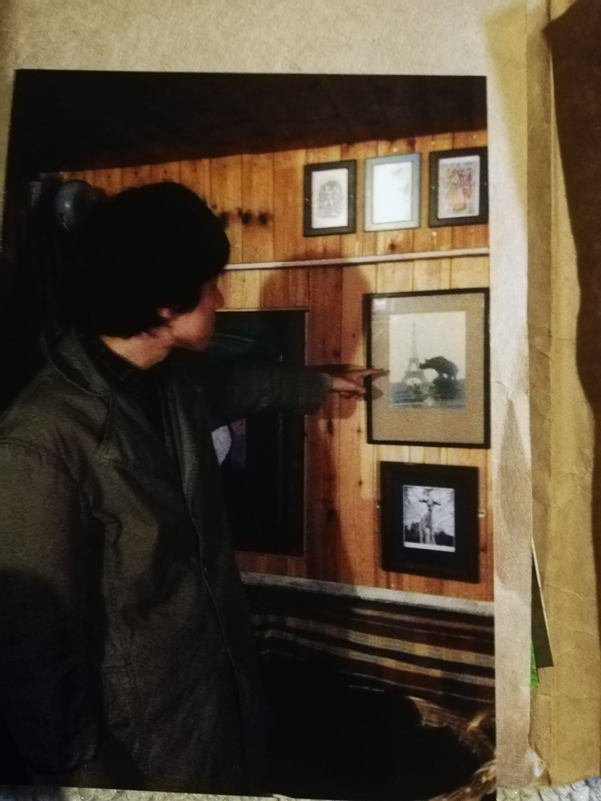
Radical leftist ideology? Can you tell me about that?
Paris in May of 1968, a period of civil unrest occurred throughout France, lasting some seven weeks and punctuated by demonstrations, general strikes, and the occupation of universities and factories. This protest attitude set the art world on fire. It synchronized with Woodstock on the West Coast of USA, but it is not same.
The period grew many artists that Steven loves. Red Noise (the son of Boris Vian, Patrick Vian joined), Mahogany Brain and more. They went into music and performance with their radicalism. Political creativity is common in Dada/Surrealism.
Their (Dadaist, French lefty artists and Steven ) political creativity is not often portrayed directly… on the surface of their arts. But the root of their creativity is a strong political attitude of attaining freedom.
Did you see his politics in his personal life? The way he lives?
He emigrated to Ireland from the UK in the late 80s. The reason was that it was difficult to live in London, which was made worse by the effects of the regime at the time. At the same time, he didn’t want to give up the environment in which he could continue to create.
So they moved to a remote part of Ireland and protected what they wanted to do, even building their own house.
To be truly instinctive is at the same time political.
What attracted you to Nurse with Wound?
I think the reason I liked Nurse With Wound was because it evoked this nostalgia-laden, unique experience.
André Breton once said, “Surrealism is about reclaiming your childhood,” which I think is pretty literal… for me. My parents were teenagers in the 60’s, so we had items of the Beatles and Twiggy in the house a lot, and I fell in love with 60’s pop art like them for the same reason. 60s artists like Soal Bass are influenced by Dadaism and Russian Constructivism (one of the things that inspired Nurse With Wound), so my tastes are all connected.
I’m interested in the timeless things (it does not have to be famous).
People do sampling, big and small, but I like writers where sampling has become an identity. I love the expression of absorbing other people’s things, from homage to ready-made ideas. The choice of images and the way in which they are juxtaposed reflect the creator’s themselves.
An artist, Yosuke Takahashi is also a big part of my life. He is known for his portrayal of Japanese retro objects, especially Showa era, but I love the work he did not long after his debut. It mainly based on western style fairy tales.
The brushstroke lines and woodcut-like backgrounds look like a collage, and they all make you want to frame them. It’s a shame it’s not well known abroad. It was a magnificent moment for me. The girl’s singing, “I am a coffee saucer, please put coffee mag on me. tu la la la la la”.
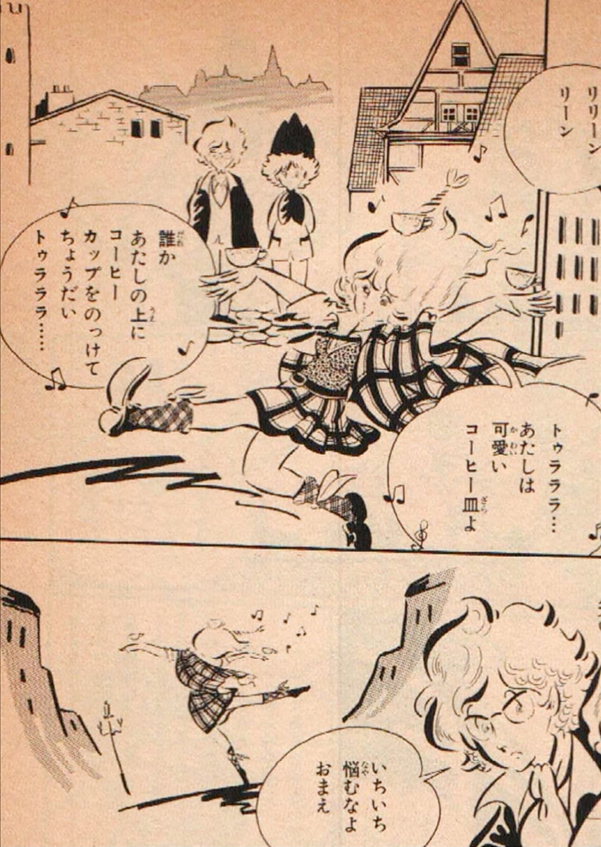
Are there other Japanese artists you enjoy that you wish were more known outside Japan?
Shigeru Mizuki is well known in Japan and as manga master. Since it was also published in France, it seems to be gradually gaining recognition in Europe as well.
He also left behind his own war experiences, as well as his post-war experiences. This must be more valuable than success, I think. His life itself has had a lot of influence to me, clearly, I re-understand it in these days.
It’s not like a creators who just sticks to “quality” on the surface. I’m not interested in them… I think even more so because I feel that almost all of Japanese scene is very commercialistic… or maybe that’s how it is in the world?
He often incorporates Western art into his own work, incorporating paintings and photographs into his comics like a collage. I had come across these works before I knew about Dada or Surrealism.
His “Yokai” (Japanese monsters) or “supernatural” drawing describe (super) natural impressions which live with me until today. Sometimes, when I am interested in an artist’s work or statement, I connect it back to Mizuki.
One of the example is John Balance ( of COIL). He had a memorable moment in an interview, “When I was young I was really quite scared of the dark, and I remember the deciding thing was I turned around and said: I’m going to go to the woods at night and walk into the darkness and embrace it and if I die. I now know fear of the dark is wrong. In fact, it’s comforting.”
That is completely the same with my feeling towards Mizuki.
When I was around 6 years old, until I was 10 years old, I l was living in a house which was in front of a mountain road. The toilet was an unwashed type, so it always smelled of poo! If I wanted to piss at night, I didn’t want to go there because of the smell.
I got into a habit that not breathing through my nose, and I still do it when I speak, so always went outside and pissed in the field. I was scared to go outside without any lights, but at the same time I thought it was very quiet and the night sky was beautiful.
Fear came with peace of mind.
Mizuki’s landscape paintings remind me of the silhouettes of the mountains and the starry sky I saw at the time. Mizuki also drew a bunch of European esoteric things. The landscapes depicted there are unfamiliar in Japan. Since my parents loved a Western culture, I naturally became interested in foreign photography and arts.
What about musicians?
My taste in music also began to form for reasons close to visual art. I’ve always liked Japanese artists who use a lot of sampling, like Keigo Oyamada aka Cornelius and Denki Groove. It was fun to explore the connections between CD cases, liner notes, and the designers they were working with. They are strongly influenced by post-punk, and knowing post-punk also means knowing the roots and influences. You can learn a lot by checking out the samples used in the music.
JG Thirlwell, the sweet guy I interviewed for the latest issue of FEECO, is another one who is very obsessed with sampling. In his case, it’s more accurate to say absorbed.
He takes every experience and boils it down and expresses it in his own way. That obsession continues to this day, at the age of 60. There are pieces of music cut out here and there in his music that sound and function completely different from the original. I think he’s a great guy who blends classic and rock ‘n’ roll with readymade.
Links
